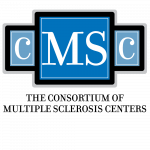Background: Recent data have shown that PwMS may use cannabis to treat their complex symptoms, most frequently spasticity, pain, and sleep. Given that nabiximols, a complex mixture of tetrahydrocannabinol, cannabidiol, and other cannabinoid and noncannabinoid constituents, is an investigational drug for spasticity associated with MS in the US, it would be helpful to understand how nabiximols might also affect concurrent pain and sleep disturbances.
Objectives: Explore and report changes in concomitant pain or sleep impairment among PwMS using nabiximols for spasticity.
Methods: A systematic literature review was conducted to identify all publications of observational (noninterventional) studies on nabiximols oromucosal spray through November 4, 2020. Data on study design, patient characteristics, and spasticity, sleep, and pain outcomes were extracted from publications meeting inclusion criteria.
Results: Of 95 records identified, 7 met inclusion criteria, including observational studies and treatment registries. All 7 studies in PwMS assessed pain; 5 assessed sleep. Improvements in spasticity were reported across all studies, typically measured by spasticity numerical rating scale (NRS, 010) score after 1 month of treatment (mean reductions ranged from 0.9 to 2.8 points). All 7 studies reported some degree of improvement in pain at follow-up times ranging from 1 to 6 months. In the 4 studies that included the pain NRS (010), mean reductions from baseline were statistically significant in each study, with point estimates for mean (percentage) change ranging between 1.2 (24%) and 3.1 (51%). Across all 5 studies reporting on sleep, nabiximols decreased sleep disruptions and/or improved sleep quality at follow-up times ranging from 1 to 12 months. In the 4 studies in PwMS that assessed sleep impairment with the sleep NRS score (010), mean reductions from baseline were statistically significant in each study, with point estimates for mean (percentage) change ranging between 0.9 (23%) and 1.9 (37%). Nabiximols treatment was generally well tolerated, with adverse events occurring in 10% to 81% of participants; dizziness and fatigue were most common.
Conclusions: Results from 7 real-world studies assessing nabiximols for the treatment of MS spasticity showed improvements in spasticity and concurrent pain and sleep disturbances. Additional research is needed to better understand the relationship between improvements in spasticity and concurrent MS symptoms.
[learn_press_profile]
